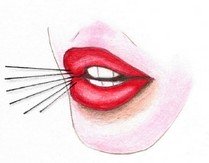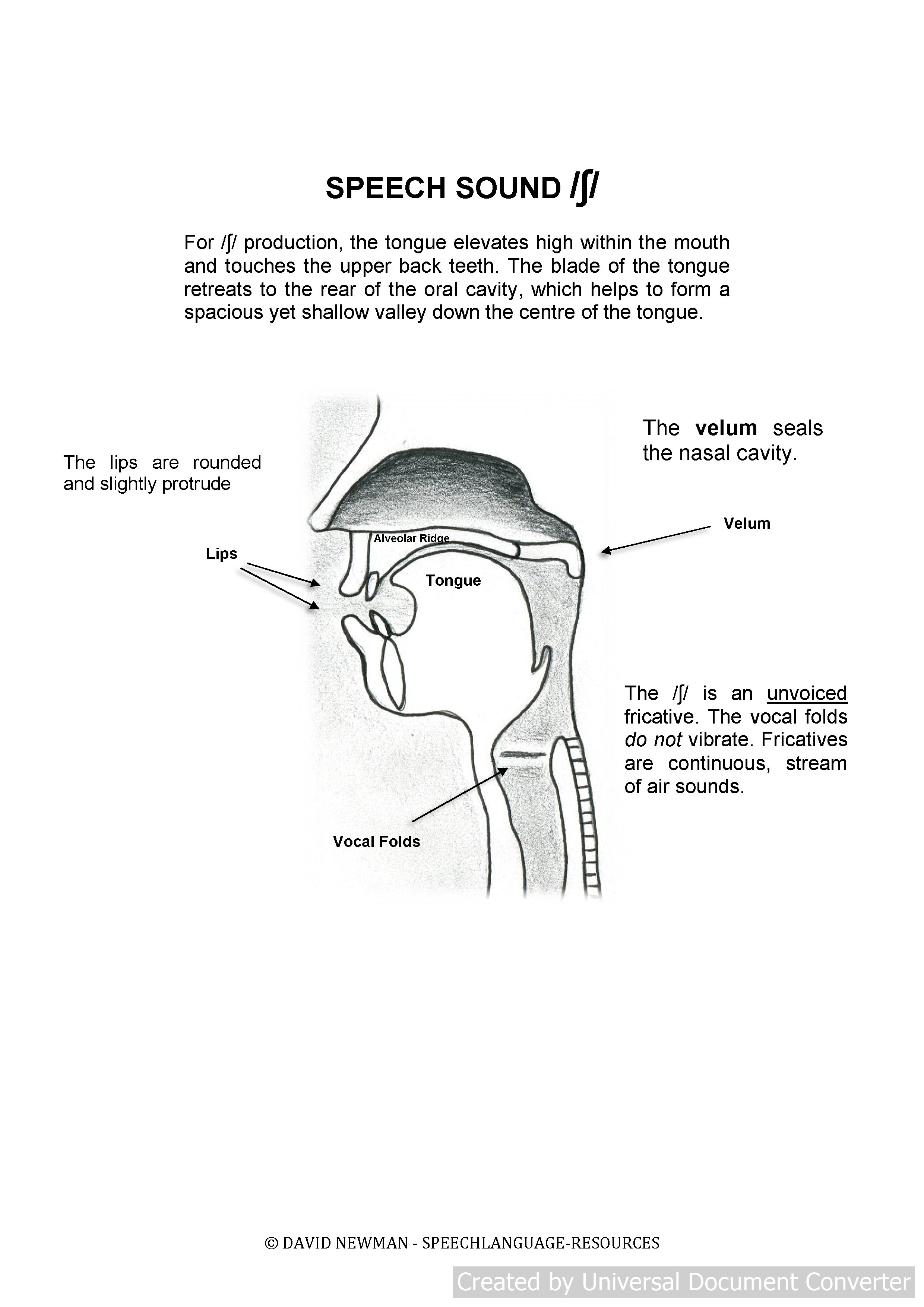Speech Therapy sh Sound

Speech Therapy sh Sound: The tongue elevates high within the mouth and touches the upper back teeth. The blade of the tongue retreats to the rear of the oral cavity which helps to form a spacious yet shallow valley down the centre of the tongue.
This mouth shape produces a long shallow constriction which begins at the velum (soft palate) at the rear of the oral cavity to the alveolar ridge toward the front of the oral cavity. The lips are projected outward and the vocal folds do not vibrate.
Speech Therapy sh Sound - Sound Errors
/ʃ/ Sound Errors
The most common speech sound error involving the /ʃ/ sound is when the /ʃ/ becomes the /s/ sound. That is, the tongue pushes too far forward in the mouth and becomes the /s/ sound. This is known as fronting. In terms of speech production, fronting occurs when sounds that should be made at the back of the mouth are made at the front of the mouth. For instance, when children attempt the /ʃ/ sound their tongues thrust too far forward. The result is the /s/ sound. Ship becomes sip and shape becomes sape, etc.
How to stimulate the/ʃ/ sound
- Demonstrate the characteristics of correct /ʃ/ production to the child.
- For the /ʃ/ sound the blade of the tongue is at the rear of the oral cavity touching the upper back teeth.
- The vocal folds do not vibrate and are silent.
- The airstream passes through the centre of the oral cavity over the shal-low valley between the tongue and the roof of the mouth.
- The lips stick out slightly.
Speech Sound Structures - /ʃ/ Sound
Click on the image to download speech sound structures /s/
Speech Therapy sh Sound - How to Stimulate the sh Sound
/ʃ/ Sound Stimulation
Work through the following procedures with your child.
- Raise your tongue so that you can feel the upper teeth at the back of the mouth.
- Touch the tongue tip at the roof of the mouth then lower it so that it doesn’t touch any structure in the mouth. The tongue should feel like it is in the middle of the mouth.
- Pucker your lips.
- Allow the air-stream to flow over the centre or the middle of the tongue.
Speech Therapy sh Sound - Sculpting sh Sound from other Speech Sounds
Many speech sounds can be sculpted using other speech sounds as a starting point. This involves altering or adjusting speech sounds so that they approach the target sound in nature. This works by the clinician modeling a sound that the child is able to produce. The clinician then makes slight, progressive adjustments to the sound until the target sound is generated.
Sound Sculpting from the /n/ Sound
- The /ʃ/ sound can be formed from the /n/ sound. We do this by first shaping our mouth for the /n/ sound. We do this by touching our tongue tip to the roof of the mouth (alveolar ridge). We produce a sustained /n/ sound then lower the tongue a little. The/n/ sound is a voiced nasal but similar to the /s/ sound it can still be used to help sculpt the voiceless /ʃ/ sound.
- Next, pucker the lips slightly.
- Allow the air-stream to flow over the tongue. Your tongue tip should be not touching any structure and you should feel the sides of the tongue touching the upper back teeth. The sound should be a little windy in nature.
Sound Sculpting from the /s/ Sound
The /ʃ/ sound can also be formed from the /s/ sound. We do this by first creating the /s/ sound. (Demonstrate the /s/ sound)
- Prolong the /s/ sound and slowly retract the tongue so that it progresses gradually to the rear of the mouth. (This can be demonstrated with your hand representing the tongue and pulling the hand back a little to show the correct movement)
- Note that the sides of the tongue should be touching the upper back teeth.
- Pucker the lips slightly. The sound should change from a hissing /s/ to a windy /ʃ/ sound.
Speech Therapy Sequence - /sh/ Sound:
This page features speech intervention stages, from sound in isolation to word level.
Updated 31/07/2020

